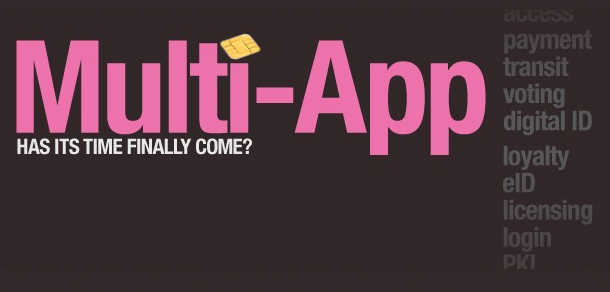Has the time for multi-application smart cards finally come?
Adding identity, other apps to EMV could hasten multi-app reality
03 September, 2013
category: Corporate, Digital ID, Financial, Government, Health, Smart Cards
There was a time in the not-so-distant past where “one card that would rule them all,” was a hotly discussed topic. Credit, debit, transit, multiple loyalty schemes and possibly even identification would all be placed on to one smart card for use everywhere and anywhere.
Conferences dedicated sessions to the discussion of multi-purpose smart cards, touting them as the Next Big Thing. But it never really happened.
There are cobranded payment cards with transit apps in the a few places around the globe, but placing multiple applications on smart cards has been the exception rather than the rule. It is viewed as too difficult and there are always questions of what logos would be printed on the card, who owns the cardholder and how apps are added and revoked.
But now bank-issued cards may be crossing the payment lines and dawning a new day for multi-app cards. There are more than 1.5 billion EMV cards in circulation throughout the world, according to EMVCo., the association charged with looking after the standard. The global payment standard has been around since the mid-1990s and following adoption by a majority of the world’s industrialized countries over the past decade, the U.S. is planning to climb aboard as well.
As the need for high-assurance identity in the physical and online worlds have grown, so too have the discussions about using the EMV application and bank-issued cards for purposes other than payments.
Could we be witnessing the rebirth of the multi-application smart card?
To date, using EMV cards with multiple applications has been much discussed but has resulted in few deployments. The problem is that banks tend to issue the cheapest, lowest memory cards and lock them so additional applications can’t be added.
Still examples providing a glimpse to the potential do exist. A handful of campuses are using a robust solution and Nigeria will start issuing a national ID card that includes an EMV application. Meanwhile, others are using the EMV technology to enable an additional security factor online.
There are different ways that an EMV card could be used for other applications. Ultimately, it comes down to the business case of banks letting other enterprises place applications on the smart card or being able to provision the EMV application into a physical or logical access system.
Banco Santander goes multi-app for student ID
Banco Santander’s university card program places an EMV application on the student ID card along with other applications, says Samuelson Drumond, vice president of smart card for Santanader Universities. The program has deployed 4.2 million cards at 211 universities in 10 countries.
Programs in Brazil, Spain and Chile are all issuing dual-interface cards with EMV contact and MasterCard’s PayPass contactless EMV app, Drumond says. “It’s a 36K chip with a small portion used for financial functions and the remaining space used for university applications and digital signature,” he adds.
The ID cards are available only to members of a given university and have become a management tool for students to access a variety of applications. For example, in Santiago de Compostela, the card offers transit ticketing, digital signature, parking access, secure access to computers and an electronic purse for vending machines and meals. The card also offers time control, manages library loans, enables consultation at self-service kiosks, discounts in certain shops.
Students are under no obligation to open an account with the institution, but for those that do, the card supports use at ATMs and as an EMV debit card.
Since the card uses the EMV standard it can also be used in open-loop transit systems. In the future, Santander is looking at using the mobile device for identification and to generate one-time passcodes for secure online authorization of payment transactions or other purposes.
Santander issues multi-application Java cards, Drumond says. The EMV application is isolated on the chip and additional applications provide the digital signing, access control and other functionality.
Gemalto provides the cards for the Santander schools, says Philippe Benitez, vice president of marketing, Secure Transactions for Gemalto North America. “These are high-end cards that are designed for use in all the touch points that a student might need to access,” he adds.
However, Benitez hasn’t heard of any need to use EMV for other purposes beyond the university space, and some government programs.




